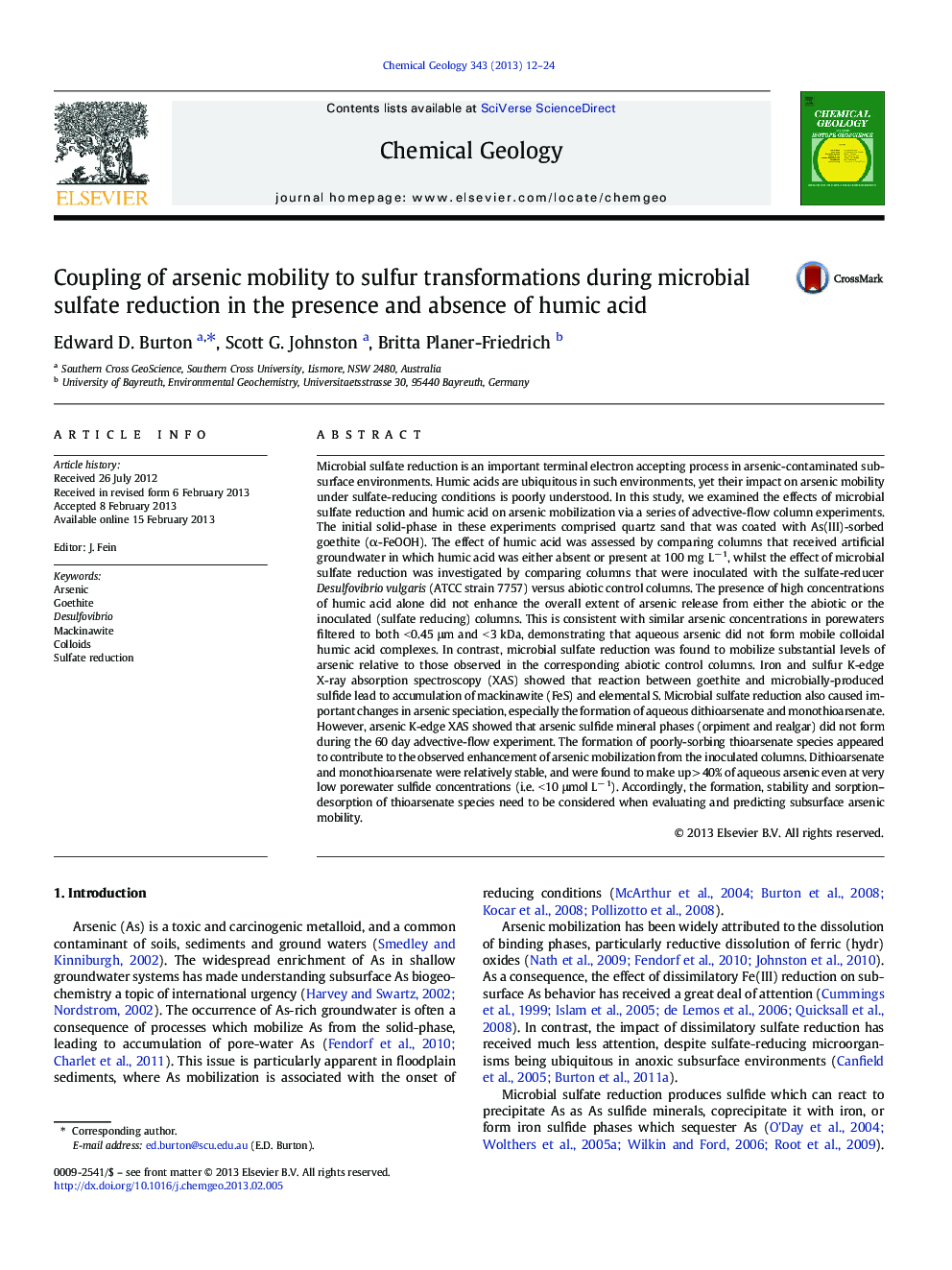| کد مقاله | کد نشریه | سال انتشار | مقاله انگلیسی | نسخه تمام متن |
|---|---|---|---|---|
| 4698994 | 1637625 | 2013 | 13 صفحه PDF | دانلود رایگان |
Microbial sulfate reduction is an important terminal electron accepting process in arsenic-contaminated subsurface environments. Humic acids are ubiquitous in such environments, yet their impact on arsenic mobility under sulfate-reducing conditions is poorly understood. In this study, we examined the effects of microbial sulfate reduction and humic acid on arsenic mobilization via a series of advective-flow column experiments. The initial solid-phase in these experiments comprised quartz sand that was coated with As(III)-sorbed goethite (α-FeOOH). The effect of humic acid was assessed by comparing columns that received artificial groundwater in which humic acid was either absent or present at 100 mg L− 1, whilst the effect of microbial sulfate reduction was investigated by comparing columns that were inoculated with the sulfate-reducer Desulfovibrio vulgaris (ATCC strain 7757) versus abiotic control columns. The presence of high concentrations of humic acid alone did not enhance the overall extent of arsenic release from either the abiotic or the inoculated (sulfate reducing) columns. This is consistent with similar arsenic concentrations in porewaters filtered to both < 0.45 μm and < 3 kDa, demonstrating that aqueous arsenic did not form mobile colloidal humic acid complexes. In contrast, microbial sulfate reduction was found to mobilize substantial levels of arsenic relative to those observed in the corresponding abiotic control columns. Iron and sulfur K-edge X-ray absorption spectroscopy (XAS) showed that reaction between goethite and microbially-produced sulfide lead to accumulation of mackinawite (FeS) and elemental S. Microbial sulfate reduction also caused important changes in arsenic speciation, especially the formation of aqueous dithioarsenate and monothioarsenate. However, arsenic K-edge XAS showed that arsenic sulfide mineral phases (orpiment and realgar) did not form during the 60 day advective-flow experiment. The formation of poorly-sorbing thioarsenate species appeared to contribute to the observed enhancement of arsenic mobilization from the inoculated columns. Dithioarsenate and monothioarsenate were relatively stable, and were found to make up > 40% of aqueous arsenic even at very low porewater sulfide concentrations (i.e. < 10 μmol L− 1). Accordingly, the formation, stability and sorption–desorption of thioarsenate species need to be considered when evaluating and predicting subsurface arsenic mobility.
► The impact of microbial sulfate reduction and humic acid on arsenic mobility was examined.
► Humic acid did not form mobile colloids with arsenic and did not enhance arsenic mobility.
► Sulfate reduction enhanced arsenic mobility, partly due to formation of thioarsenate species.
Journal: Chemical Geology - Volume 343, 8 April 2013, Pages 12–24
